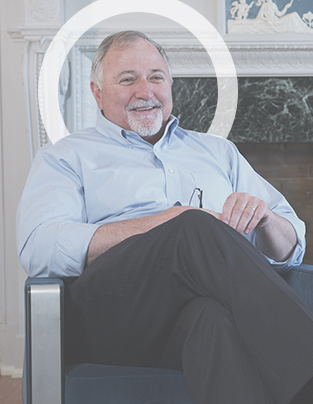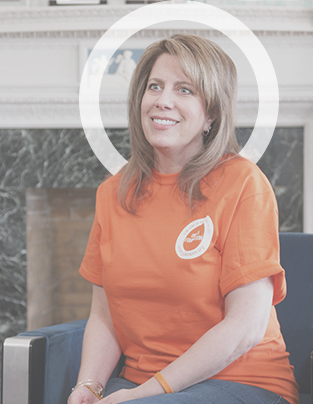donors
Giving with TFEC
Options create opportunities
Philanthropic gifts are essential to creating and sustaining vibrant communities. They confront the challenges many face daily—and provide sustenance and strength to those who need it most. We offer many options to help you make the most of your charitable giving.
Direct Gifts
- Cash
- Marketable Securities
- Closely Held Business Stock
- Mutual Funds
- Real Estate
- Tangible personal property
(such as art, collections, antiques)
- Life Insurance Policies
- Qualified Retirement Assets (IRA, 401(k), 403(b), and pensions)
- Cryptocurrency
Please consult with your tax, legal, and/or financial advisor(s) regarding the most effective giving vehicle for your circumstances. TFEC’s Gift Acceptance Policy is available upon request.
Please contact Jennifer Doyle, President & CEO.
Planned Gifts
We can assist you and your financial advisor in developing planned gifts that meet your needs. Each giving vehicle provides specific advantages to fit your individual situation.
Bequests
The simplest planned gift is a bequest that directs specific amounts or assets, or a percentage of your estate, to create a fund or add to an existing fund. A simple designation in your will is all that is needed. Click here for sample language that your attorney can incorporate into your estate plan.
Charitable Remainder Trusts
With this type of trust, you transfer assets that pay you or other beneficiaries an income for life or for a fixed term. When the trust matures, the remainder is used to establish a permanent fund in your name, with charitable distributions directed as you have chosen.
Charitable Lead Trusts
With this type of trust, you create an endowment fund at TFEC to receive the trust income for a fixed term. When the trust expires, the income or assets may be distributed to other named non-charitable beneficiaries, and your fund will remain at TFEC and continue to benefit the community as you have directed.
Life Insurance Policies
Many donors make a gift by assigning a life insurance policy to TFEC. Simply secure or transfer a policy and name TFEC as owner and beneficiary. Any ongoing premiums that you make may be tax deductible. When the policy matures, a permanent named fund is established to support your charitable causes.
Retirement Plan Assets
Large Individual Retirement Plan Asset (IRA) accounts at death may pay up to 70% in income and estate taxes. A good way to reduce taxes is to include charity as an IRA designated beneficiary. This can be done through an outright gift or by using a Charitable Remainder Trust that makes payments to your family members. Through TFEC, you can distribute your IRA after death in a tax-wise way and create a fund to benefit the community.
1920 Legacy Society
Donors who make a planned gift or remember TFEC in their wills are invited to become members of our 1920 Legacy Society. Members of the 1920 Legacy Society receive special recognition in our annual report and on our website, invitations to all TFEC events, and gifts to thank them for their planned gift.
Outside Investment Accounts
Keep your existing investment managers
Donors with funds in excess of $75,000 may request that TFEC use their personal financial advisor to recommend investment holdings. An Outside Investment Account allows donors to continue to have the responsibility of investing a fund in the hands of his or her trusted personal financial advisor, including bank custodians, bank trust departments, fee-based investment advisors, commission-based brokers, and insurance or mutual fund financial representatives. TFEC, meanwhile, retains fiduciary control of the fund and works with both the donor and the financial advisor to ensure policy compliance. TFEC also receives monthly investment statements and reviews the health of the fund with the advisor annually. Permitted investments include: stocks, bonds (no junk or LT), mutual funds, money market funds, and savings accounts. Prohibited investments include: variable annuities (except NIMCRUTS), short-sales, margin accounts, commodities, precious metals, and hedge funds.
Qualified Charitable Distributions
Commonly known as IRA Charitable Rollover
The IRA is the most heavily taxed asset in an individual’s estate, and as such, many charitably inclined individuals seek a way to eliminate or reduce the tax burden that comes with Required Minimum Distributions (RMDs). Individuals aged 70.5 or older with tax-deferred retirement accounts are eligible to make tax-free distributions from their IRA accounts to eligible tax-exempt charitable organizations using their RMD income – a qualified charitable distribution (QCD) or IRA charitable rollover.
If you are 73 or older, the IRS requires you to take required minimum distributions (RMDs) each year from your tax-deferred retirement accounts (IRA). RMDs are the minimum amount that must be withdrawn to avoid tax penalties. The income from RMDs is taxable income and may push individuals into higher tax brackets or reduce eligibility for certain tax credits and deductions.
Because the QCD is tax-free, there is no need to qualify for a charitable deduction. Moreover, the IRA proceeds are not included in the taxpayer’s gross income, resulting in an “off the top” deduction. This retirement distribution never becomes part of adjusted gross income.
Benefits of Using a QCD
Bypass 60% of Adjust Gross Income
QCDs bypass the 60% of adjusted gross income (AGI) limit on charitable contribution deductions.
Bypass Higher Standard Deduction Limitations
With higher standard deductions, more people find no tax savings for charitable gifts and QCDs bypass that limitation.
QCDs Directly Paid to TFEC Do Not Increase AGI
QCDs are paid directly to TFEC for your charitable fund and goals and do not increase AGI. When AGI increases, these things may occur:
- more social security collections are subject to income tax
- medical deductions are lost due to higher AGI limitations
- more passive loss limitations are imposed
- more income is subject to the 3.8% tax on net investment income
- Medicare insurance premiums increase
- more credits are phased out
How it Works:
Make a Qualified Charitable Distribution of up to $105,000
Individuals can make a qualified charitable distribution of up to $105,000 by transferring traditional IRA assets directly from the IRA to the charitable fund at TFEC. When the QCD is requested, individuals must be at least 70 ½ years old. If married, each spouse can transfer up to $105,000 from their IRA annually if both meet the age requirement.
Assets can also be transferred from Roth IRAs under certain circumstances; please consult with your financial or tax advisor in these circumstances.
401ks, 403bs and Other Retirement Assets
Individuals may also use other retirement assets such as 401ks, 403bs, etc. Still, they must first roll those assets into an IRA to be able to participate in the benefits of QCD without tax implications.
Transferring to a Charitable Organization
QCDs must be transferred directly from your IRA custodian to the charitable organization for there to be no taxable income recognition.
If the distribution check is made payable to you as the individual, the distribution does NOT qualify as a QCD and would, therefore, be treated as taxable income.
If you receive any benefit in return for your charitable contribution (e.g., cost of playing in a golf tournament, season ticket fees, etc.), then your contribution would not qualify as a QCD.
The distribution is not included in the donor’s income for federal income tax purposes, nor does it generate a tax deduction, preserving the full amount of the donor’s charitable deductions for other charitable gifts, regardless of whether deductions are itemized.
Establishing a Fund During Your Lifetime
Using QCD, donors can establish funds during their lifetimes rather than through their estate plans, allowing them to see the positive effects on the community. The gift can be placed into various charitable funds in the individual’s name, their family’s name, or in honor or memory of someone. It can be endowed and grow over time into perpetuity, supporting identified nonprofit organizations and causes the donor chooses.
Types of charitable funds that can be established:
- Unrestricted – addresses a broad range of current and future community needs locally
- Area of Interest – targets your gift to areas that an individual is interested in, e.g., performing arts, or early education
- Restricted – supports the work of specific IRC section 501(c)(3) nonprofit organizations that the individual chooses
- Scholarship – supports higher education for students based on the criteria an individual chooses
Individuals can also choose to donate to an already established fund at TFEC.
Per IRS guidelines, QCDs cannot be used to support Donor-Advised Funds
New legislation passed in 2023 allows individuals to use their QCD to fund a life income gift, such as charitable remainder trusts (CRTs).
The definition of QCDs has been expanded to include one-time distributions to create life income plans, specifically charitable remainder unitrusts or annuity trusts (collectively, CRTs).
- This new type of QCD is limited to a one-time maximum transfer of $53,000 to a qualified CRT.
- Therefore, the new CRT option can only be used once during the lifetime of the IRA owner.
Please see the Charitable Remainder Trust one-page document for more information regarding CRTs
For more information about establishing a fund using your Qualified Charitable Distribution or making a Qualified Charitable Distribution to support an existing charitable fund of TFEC, please contact a member of the Philanthropy Team at philanthropy@tfec.org or 717-236-5040.


Zachary Moore Music Memorial Fund
"TFEC is family to us. It means a lot to have the fund at a place where people cared about Zachary when he was alive, and care about this memorial fund that we’ve established in his honor."

Pillars with Purpose
"TFEC has a can-do attitude. They're invested not just in getting the job done, but also emotionally invested—which makes for a great partner."

Owen's Fund
"I think it's really important that we have a structure and an entity like TFEC to help the community thrive."
